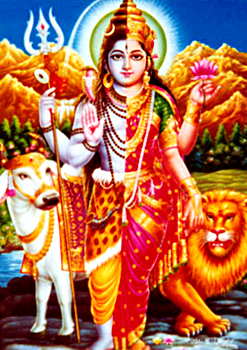 The Ardhanarisvara form of Lord Shiva is comparatively rare. This form of the deity signifies the merger of the bodies of Shiva and Shakti into one, the right half being male and the left female. This form of the deity signifies the syncretic ideology that is the union of Shiva and Shakti who are considered the primeval parents of the Universe. The spark which is produced on the unity of Lord Shiva and Shakti is nothing but lust.
The Ardhanarisvara form of Lord Shiva is comparatively rare. This form of the deity signifies the merger of the bodies of Shiva and Shakti into one, the right half being male and the left female. This form of the deity signifies the syncretic ideology that is the union of Shiva and Shakti who are considered the primeval parents of the Universe. The spark which is produced on the unity of Lord Shiva and Shakti is nothing but lust.
The deity of the Ardhanarisvara resembles the dokra style where the right side of the image is female whereas the left side of the image is male. The deity holds the trident in his left hand and the matted hair is shown on the left side of the head of the deity.
The deity also has the female characteristics like a swelling breast, ear-ring are noticeable towards the right side of the deity.
It can be said the neutral, uncreative substratum first divides itself into substance and energy into a male and a female principle. It can be said that the union of Shiva and Shakti is their basic reality and this reality is symbolised in the Hermophrodite which is half male, half female and is known as Ardhanarisvara and the nature of Ardhanarisvara is nature is pure lust.
This article is a stub. You can enrich by adding more information to it. Send your Write Up to content@indianetzone.com



















